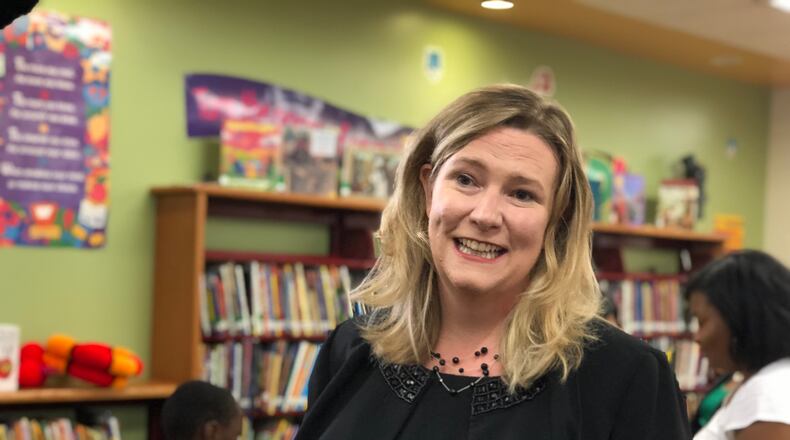MORE: How did your district do on the 2017-18 state report card?
DPS officials were absent from the mayor's update last year. But in the fall, three of the four "slate" candidates who worked together and were endorsed by Mayor Whaley won election.
“The Dayton City Commission, the Dayton school board and Superintendent (Elizabeth) Lolli are a team,” Whaley said today. “We are committed to working together for the benefit of our children.”
The City of Learners update comes less than a week after the state report cards were released and it was revealed that Dayton Public Schools scored an “F,” which means the district could face a state takeover next fall if things don’t improve.
Speaking at today’s meeting, Dayton Public Schools Superintendent Elizabeth Lolli strongly challenged the idea that the school district is failing.
“The first thing that I will assure you here, as a City of Learners in Dayton, Ohio, is that Dayton Public Schools is only an ‘F’ on paper,” she said.
“We are not an ‘F’ school district,” she said.
RELATED: Dayton schools get “F” on report card; test scores rank last in Ohio
Today, Whaley said the city and school district leaders are moving in “lockstep” to close the achievement gap in the city.
Some measurements of student success haven’t increased, but the work being done in the community is building a foundation that will get results, Whaley said.
Dayton Public Schools has a new board of education and an “excellent” new superintendent, and a stellar team of principals have been put in place this year, Whaley said.
Whaley said the Preschool Promise program already is paying off, because students have made better-than-expected gains in certain assessments and are entering kindergarten in better positions to learn. Funded by a city of Dayton income tax hike, Preschool Promise offers high quality preschool to all 4-year-old children in the city.
Whaley said some highlights of the Preschool Promise included:
- More than 1,060 Dayton school district families joined Preschool Promise last year
- 55 Dayton preschools participated in the program, providing options where families can send children
- 15 preschool providers in Dayton increased their star rating
- More than 600 Dayton families joined the Preschool Promise Star Attendance program, which provides a $25 reward each month if their children have 90 percnet or better attendance
Whaley said community partners are focused on providing young people safe and enriching summer and afterschool programs. Workforce development is extremely important, and Commissioner Chris Shaw and local unions are working to educate sutdents about apprecenticeship and training programs, Whaley said.
A big priority of the City of Learners is to attract highly skilled teachers, Whaley said.
Research by Brown University professor John Friedman found that one great teacher can raise the lifetime earnings of a single class of students by almost $1.5 million, she said. The City of Learners will offer new incentives and programs to recognize quality teaching, officials said.
The Dayton school district needs to show some improvements or risks a state takeover.
The state report card data showed improvments over last year’s results, like how Belle Haven Elementary and Meadowdale PreK-6 moved from F scores to Cs, Lolli said.
“Other buildings also moved from an F to a D,” she said. “We’ve made significant changes and significant gains, however, we have much work to do. But we are not an ‘F’ school district.”
The school district has A’s, B’s and C’s in other areas, but is measured by tests, she said. Test results are very closely correlated with socioeconomic status, she said.
“We’re not an ‘F’ in what we’re doing in our buildings … we have smart students here, we have good teachers and administrators here,” she said.
About the Author

